
The plot of the picture is borrowed from the “Natural History” of Pliny the Elder. Queen of Egypt Cleopatra was famous not only for her mind and beauty, but also for extravagance of behavior. Once, wishing to impress with her wealth the lover – the Roman commander Mark Antony, she dissolved a large pearl in a glass of vinegar, and then drained the glass.
The painting shows the moment when Cleopatra drops a pearl earring into the vessel, and Mark Antony, his companion Enobard and the Negro servant froze in mute surprise, experiencing a mixed feeling of regret and admiration. And only the court jester, grinning, points to the absurdity of Cleopatra’s insane squandering. Allegorical composition, conceived as a condemnation of the vice of Pride or Vanity, continues with its edifying implication a national artistic tradition that goes back to the works of Brueghel the Elder and Hieronymus Bosch.
 The Feast of Cleopatra by Giovanni Battista Tiepolo
The Feast of Cleopatra by Giovanni Battista Tiepolo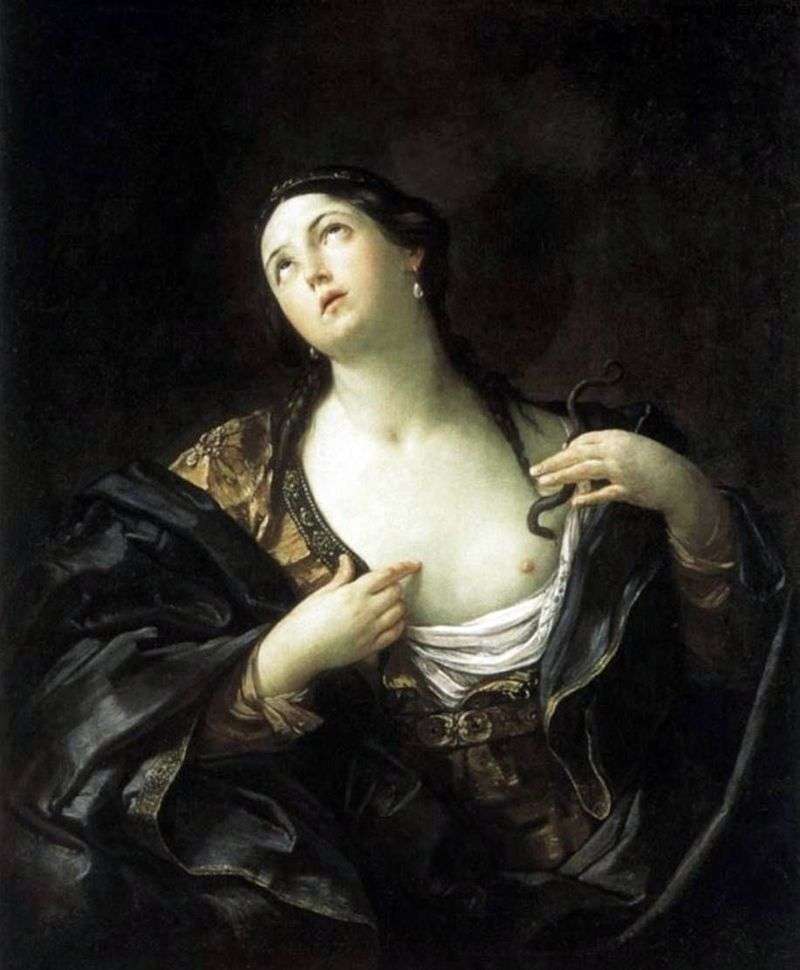 Cleopatra’s Death by Guido Reni
Cleopatra’s Death by Guido Reni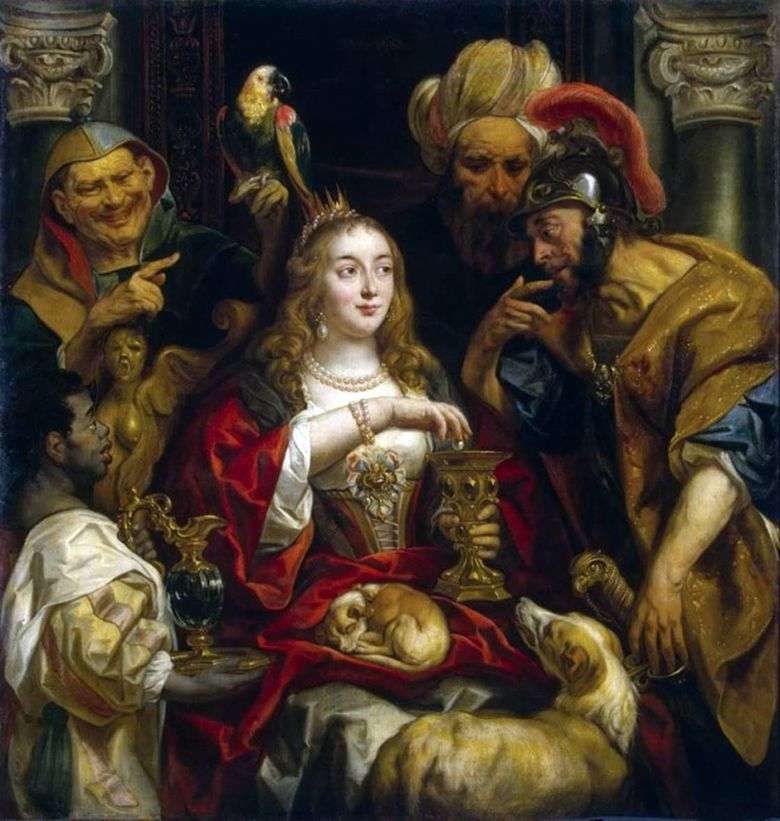 Fiesta de Cleopatra – Jacob Jordaens
Fiesta de Cleopatra – Jacob Jordaens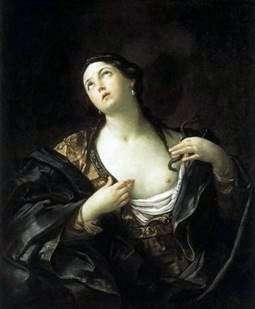 La muerte de Cleopatra – Guido Reni
La muerte de Cleopatra – Guido Reni Cleopatra’s arrival at Tarsus by Claude Lorrain
Cleopatra’s arrival at Tarsus by Claude Lorrain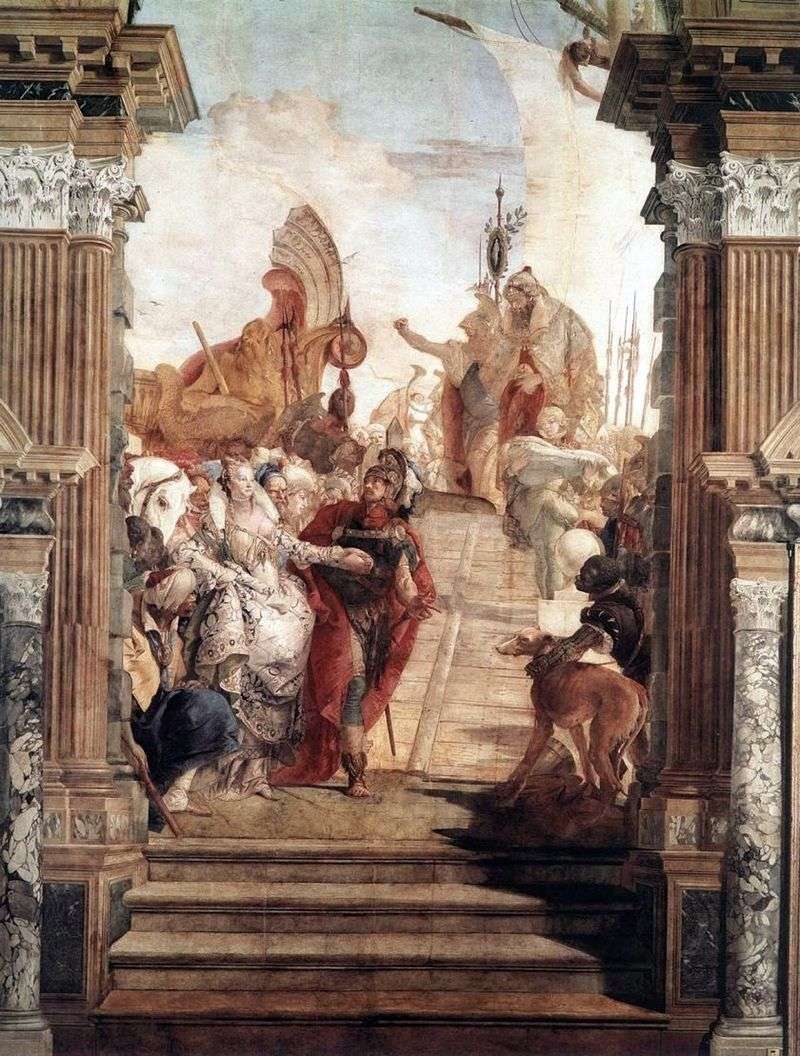 Meeting Antony and Cleopatra by Giovanni Battista Tiepolo
Meeting Antony and Cleopatra by Giovanni Battista Tiepolo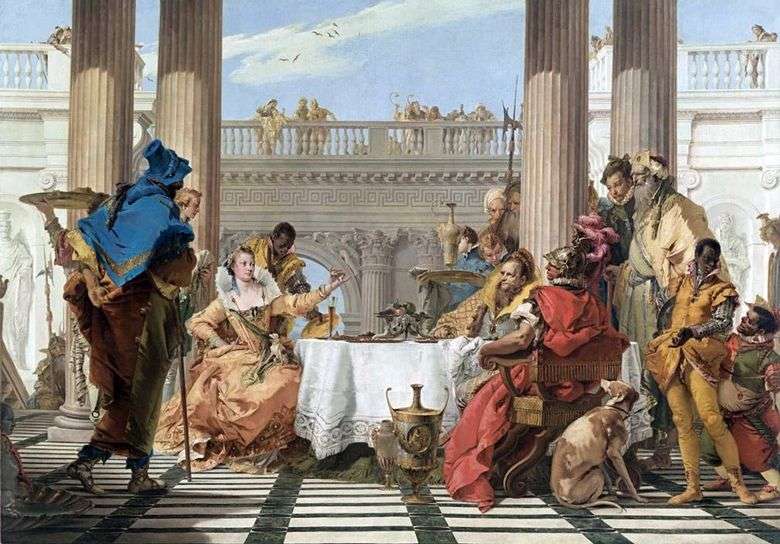 Fiesta de Cleopatra – Giovanni Battista Tiepolo
Fiesta de Cleopatra – Giovanni Battista Tiepolo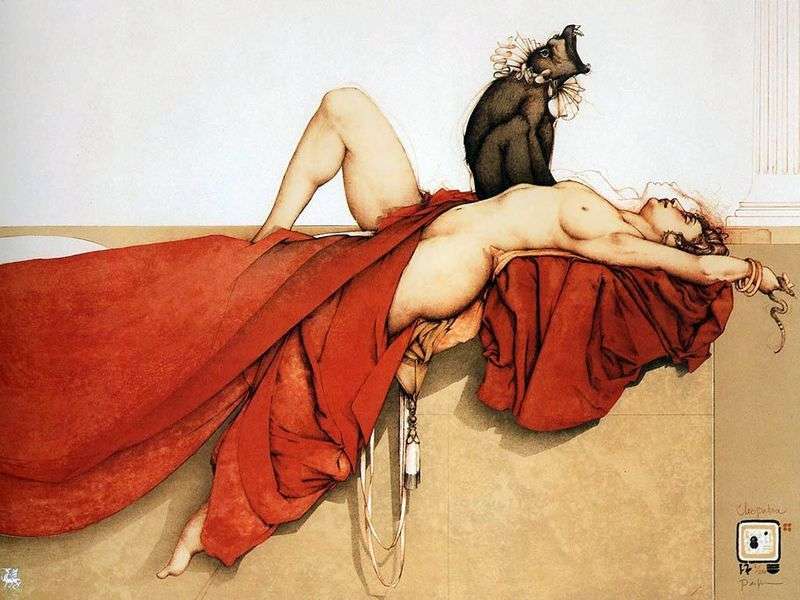 Cleopatra by Michael Parkes
Cleopatra by Michael Parkes